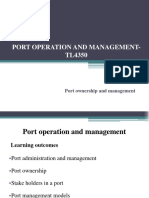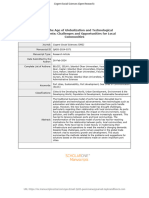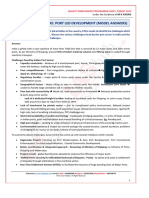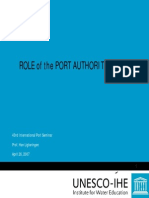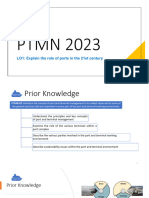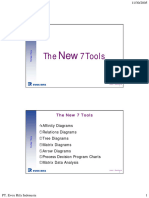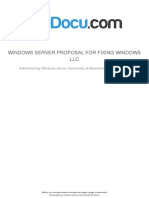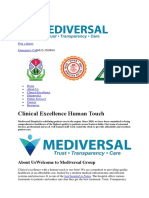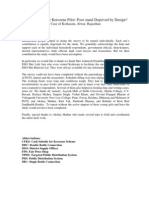Port Reform Toolkit Second Edition
The Port Reform Toolkit is aimed to provide policymakers and practitioners with effective
decision support in undertaking sustainable and well-considered reforms of public institutions
that provide, direct, and regulate port services in developing countries.
The Toolkit consists of eight modules:Module 1: Framework for Port Reform
Module 2: The Evolution of Ports in a Competitive World
Module 3: Alternative Port Management Structures and Ownership Models
Module 4: Legal Tools for Port Reform
Module 5: Financial Implications of Port Reform
Module 6: Port Regulation: Overseeing the Economic Public Interest in Ports
Module 7: Labor Reform and Related Social Issues
Module 8: Implementing Port Reform
Module 2: The Evolution of Ports in a Competitive World. This module outlines the roles and
functions of ports and the forces shaping port dynamics in the 21st century. Readers of this
module will place their ports in the context of current and historic port developments and
understand the major trends shaping the ports of the future.
Module 3: Alternative Port Management Structures and Ownership Models. This module
describes different port structures and ownership models and identifies their strengths and
weaknesses. Upon completion, readers will be able to determine the most effective, efficient,
and feasible structure for their ports, while taking into account each countrys or communitys
unique economic, political, and social environment.
Module 4: Legal Tools for Port Reform: This module focuses on the legal and contractual
options for port reform and examines their strengths and weaknesses. Readers of this module
will come to understand and develop specific port reform measures and legal frameworks
based on the ports and governments economic, financial, political, and social goals and
objectives.
Module 5: Financial Implications of Port Reform. Risk allocation among port stakeholders,
potential sources of funding for the reform process, and pricing port services to achieve
revenue and public policy objectives are highlighted in this module. Readers of this module
will appreciate port finance and its relationship to reform as well as how the financial risks
and rewards vary from one reform option to another.
Module 6: Overseeing the Economic Public Interest in Ports. This module defines the public
interest and describes the oversight mechanisms and techniques and elements of the public
interest. It provides a solid understanding of oversight mechanisms and methods; the role of
regulatory bodies, inspections and audits; reporting requirements; and the interplay between
competition and regulation.
Module 7: Labor Reform and Related Social Issues. This module focuses on the institutional,
legal, and industrial frameworks for port reform; establishing a productive dialogue among
port stakeholders; rationalizing the workforce; and overcoming roadblocks. Readers will
learn to plan for and implement rationalization of port labor in a manner that treats affected
parties fairly while achieving essential efficiency and economic improvements.
Module 8: Implementing Port Reform. How do you get from concept to effective
implementation of port reform? This module offers practical advice on how to take the many
elements of port reform and put them into a procedurally logical and politically feasible
sequence of steps that maximizes the chances for success.
Frame work for Port Reform (SECOND EDITION)
Introduction
The process of institutional reform is complex. Most countries undertake the kinds of
fundamental institutional reforms that shift boundaries between the public and private sectors
less than once in each generation.
A successful reform program will help free governments of
1)
2)
3)
4)
Unnecessary expenditures
Releasing funds for high priority social programs
Ease bottlenecks to trade and economic development
Motivate the adoption of new regulations that protect the environment and improve
worker and navigational safety.






















